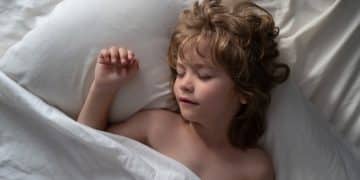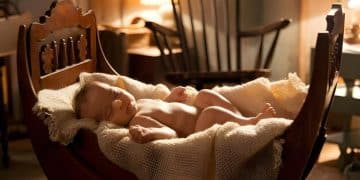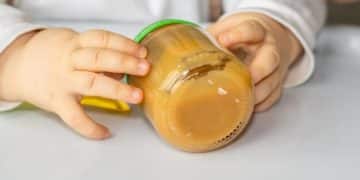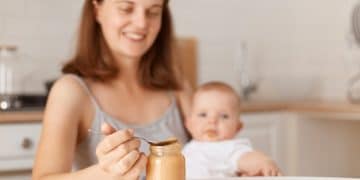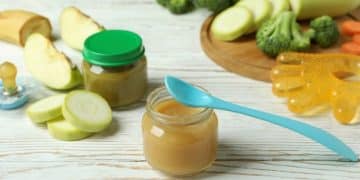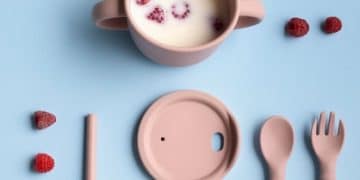Crib Mattress Comparison: Find the Safest & Best for Your Baby

Choosing the right crib mattress is crucial for your baby’s safety and sleep quality; this comparison evaluates different types, materials, and features to help you select the safest and most comfortable option.
Navigating the world of crib mattresses can be overwhelming for new parents. This article provides a comparison: crib mattresses – which one is best for your baby’s sleep and safety?, helping you make an informed decision.
Understanding the importance of a safe crib mattress
A safe crib mattress is paramount for your baby’s health and development. It’s not just about comfort; it’s about preventing potential hazards and ensuring a sound sleep. There are several factors to consider when evaluating a mattress’s safety.
Firmness Is Key
One of the most critical aspects of a crib mattress is its firmness. A firm surface reduces the risk of Sudden Infant Death Syndrome (SIDS) by preventing the baby from sinking into the mattress, which can obstruct breathing.
- Always check the manufacturer’s guidelines on firmness.
- Test the firmness by pressing on the mattress – it should spring back quickly.
- Avoid mattresses that feel soft or plush to the touch.
Proper Fit Within the Crib
A snug fit within the crib frame is essential to prevent gaps where a baby could become trapped. Measure your crib’s interior dimensions and compare them to the mattress’s specifications.
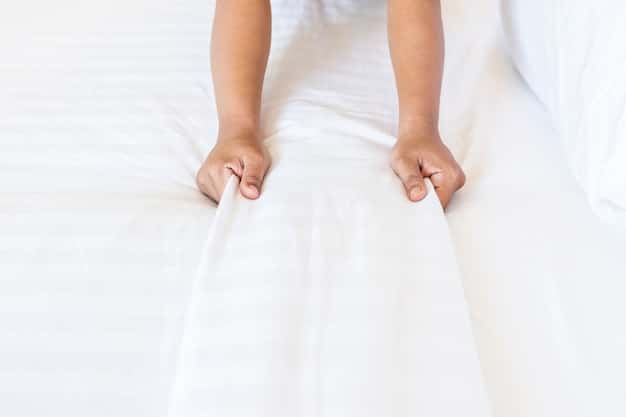
Types of crib mattresses: Which is the best?
Crib mattresses come in various types, each with unique advantages and disadvantages. Understanding these differences can help you narrow down your options and select the best mattress for your baby. Let’s delve into the specifics of each type, evaluating their materials, benefits, and drawbacks.
Innerspring Mattresses
Innerspring mattresses feature a core of steel coils that provide support. The number and gauge of coils can vary, affecting the mattress’s firmness and durability. These mattresses are generally more affordable than other types, making them a popular choice for budget-conscious families.
- Pros: Affordable, durable, and widely available.
- Cons: Can be heavy, may not conform to the baby’s body as well as foam mattresses.
- Look for mattresses with a higher coil count for better support.
Foam Mattresses
Foam mattresses are made from polyurethane foam and are lighter than innerspring mattresses. They often contour to the baby’s body, providing enhanced comfort. The density of the foam affects its firmness and durability, so it’s important to choose a high-density foam mattress for optimal support and safety.
Pros: Lightweight, comfortable, and often more affordable than organic options.
Cons: May off-gas VOCs (volatile organic compounds), can break down over time. Look for CertiPUR-US certified foam to minimize chemical emissions.
Key materials used in crib mattresses
The materials used in a crib mattress play a vital role in your baby’s health, safety, and comfort. From organic cotton to memory foam, each material has different properties that can impact the mattress’s overall performance. Here’s a closer look at some of the key materials used in crib mattresses:
Organic Cotton
Organic cotton is a natural and breathable material that’s often used in the mattress cover. It’s grown without synthetic pesticides or fertilizers, making it a safer option for babies with sensitive skin or allergies.
Polyester
Polyester is a synthetic fiber that’s commonly used in mattress covers and filling. It’s durable, wrinkle-resistant, and easy to clean. However, polyester is not as breathable as natural fibers and may trap heat, potentially leading to discomfort for the baby.
- Pros: Durable, affordable, and easy to clean.
- Cons: Not as breathable as natural fibers, may contain chemicals.
- Look for polyester fabrics that are OEKO-TEX certified, ensuring they are free from harmful substances.
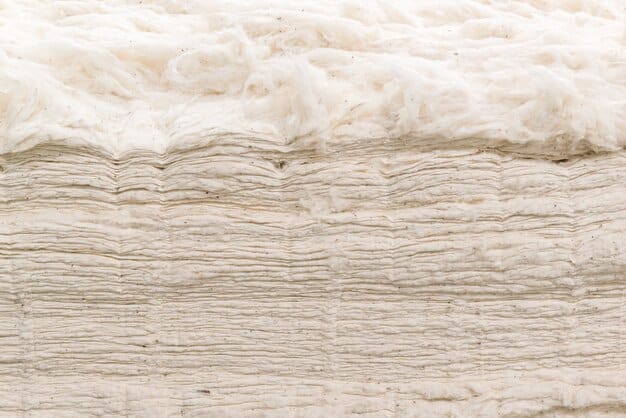
Features to consider when choosing a crib mattress
Choosing a crib mattress involves more than just selecting a type and material. Several features can enhance safety, comfort, and convenience. Here are some key features to consider when making your decision.
Waterproof Cover
A waterproof cover is essential for protecting the mattress from spills, accidents, and moisture. Look for covers made from waterproof materials like polyurethane or vinyl. These covers are easy to clean and can help prevent mold and mildew growth inside the mattress.
Breathability
Breathability is important for regulating the baby’s body temperature and reducing the risk of overheating. Mattresses with breathable covers and ventilation holes allow air to circulate freely, keeping the baby cool and comfortable.
Maintaining your crib mattress for longevity
Proper maintenance can significantly extend the life of your crib mattress and ensure it remains safe and hygienic for your baby. Regular cleaning and care are essential for preventing mold, mildew, and allergen buildup. Here are practical tips for maintaining your crib mattress and ensuring its longevity.
Regular Cleaning
Clean the mattress regularly to remove spills, stains, and dirt. Use a mild soap and water solution to spot clean the mattress cover. Avoid using harsh chemicals or abrasive cleaners, as they can damage the materials and pose a risk to your baby’s health.
Flip and Rotate
Flipping and rotating the mattress regularly can help distribute wear and tear evenly, preventing indentations and sagging. Follow the manufacturer’s instructions for flipping and rotating the mattress.
- Flip the mattress every few months to distribute wear evenly.
- Rotate the mattress to prevent sagging.
Making the right choice for your baby
Choosing the right crib mattress involves careful consideration of safety, comfort, and durability. By understanding the different types of mattresses, materials, and features, you can make an informed decision that provides your baby with a safe and comfortable sleep environment.
| Key Point | Brief Description |
|---|---|
| 👶 Firmness | Ensures baby’s safety; prevents sinking and risk of SIDS. |
| 🛡️ Waterproof Cover | Protects mattress from spills and moisture, preventing mold. |
| 🌿 Material | Organic cotton is natural and breathable for sensitive skin. |
| 💨 Breathability | Regulates temperature, reducing overheating risk for baby. |
Frequently Asked Questions
▼
A crib mattress should be firm to reduce the risk of SIDS. It should quickly regain its shape when pressed. Avoid mattresses that are soft or plush.
▼
Yes, organic crib mattresses are a healthier choice as they’re made without pesticides or harmful chemicals. They are typically safer for your baby’s sensitive skin.
▼
You should spot clean your crib mattress regularly, especially after spills or accidents. Deep cleaning should be done every few months.
▼
CertiPUR-US certification ensures that the foam has been tested and certified to meet specific standards for content, emissions, and durability, minimizing chemical exposure.
▼
No, you should never use a regular mattress in a crib. Crib mattresses are specifically designed to fit snugly and provide the necessary firmness for infant safety.
Conclusion
Ultimately, the best crib mattress for your baby depends on your priorities and budget. Prioritize safety, comfort, and durability to provide your little one with the best possible sleep environment.
